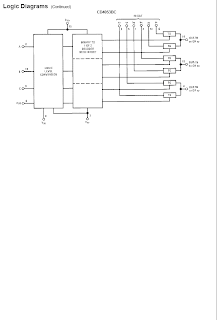Since the data pins are connected to the processor's data bus, they must be put into a high-impedance state at all times except when the processor expects them to drive the bus during a read cycle. There are two control lines for the memory chip, the chip select (CS) and the read-write (RW) lines. When RW is high, data appears when CS is active. The 6810 has six CS pins, four active low and two active high. All must be active to say that CS is active.
When RW is low, CS has a different function. Instead of activating the data outputs, it strobes the data on the data bus into the current address on the trailing edge of its pulse. Different memory chips may work in different ways, but something like this occurs in any case. This happens to be the way the 6810 works.
When the 6810 is connected to the processor in the normal way, the RW line is connected to the R/W signal of the processor, which takes its proper value at the start of the cycle. CS is active during φ2, which is the clock signal produced by the processor that is high during the last half of the bus cycle. If the 6810 were the only thing on the bus (and it will be for our initial test) one can simply use φ2 as CS. In a more general case, CS will combine both φ2 and an address decode depending on the current address output by the processor. Different devices on the bus will have different address decodes.
References
http://mysite.du.edu/~jcalvert/tech/6504.htm
http://www.datasheetarchive.com/preview/441555.html










